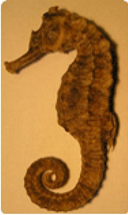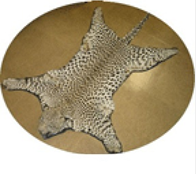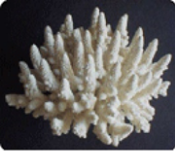CITES CONVENTION
INTRODUCTION
INTERNATIONAL APPLICATION
APPLICATION IN THE EU
APPLICATION IN SPAIN
INTRODUCTION
The Convention on International Trade in Endangered Species of Wild Fauna and Flora, better known as the CITES Convention (Convention on International Trade in Endangered Species of Wild Fauna and Flora), seeks to preserve the conservation of endangered species of fauna and flora. wild animals by controlling their trade.
It was signed in Washington on March 3, 1973 by 21 countries, entering into force in 1975. Currently, 183 countries, called Parties, have joined, that is, almost all the countries in the world are part of the Convention. Spain's accession to the CITES Convention took place on May 16, 1986.
The CITES Convention functions as an instrument of international trade policy, establishing a global network of controls on international trade in endangered wild species and their products, requiring the use of official permits to authorize their trade. The protection extends to animals and plants, live or dead, their parts, derivatives or products that contain them; That is, products such as skins, ivories, shells, musical instruments, seeds, extracts for perfumery, etc. are also protected. made from specimens of species regulated by the Convention.
The objective is to ensure that international trade in specimens of wild animals and plants is sustainable and does not endanger their survival. This essentially means prohibiting trade in endangered species and regulating trade in threatened or endangered species.
For the operation of the Convention, there are two bodies:
- The Conference of the Parties, the highest body of the Convention. It brings together all the Contracting States of the Convention (Party countries or Parties) at least once every 2 or 3 years in ordinary session. It may also meet in extraordinary session at the request of at least one third of the Parties. The work of the Conference of the Parties is complemented by the support of the Technical Committees: Permanent Committee, Animals Committee and Plants Committee.
- The CITES Convention Secretariat, administered by the United Nations, is based in Geneva, Switzerland, and is funded by contributions from the Parties. The Secretariat acts as a liaison agent for exchanges of information between the different States and with other authorities and organizations.
 The Convention establishes the need to obtain export permits in the country of origin and, in some cases, import permits in the country of destination prior to the exchange of the specimens. It also contemplates the issuance of certifications for the exceptions provided for in the Convention. Furthermore, the Convention allows the possibility of applying stricter national legislation, as is the case applied by the European Union.
The Convention establishes the need to obtain export permits in the country of origin and, in some cases, import permits in the country of destination prior to the exchange of the specimens. It also contemplates the issuance of certifications for the exceptions provided for in the Convention. Furthermore, the Convention allows the possibility of applying stricter national legislation, as is the case applied by the European Union.
The ultimate goal of the CITES Convention is to help ensure that international trade in wild animals and plants is legal, sustainable and traceable. The established system of permits and certificates allows all CITES merchandise to be perfectly documented and its origin, destination and reason for which it is sold is known.
The Convention also establishes the need for, among other control actions:
- Appoint one or more Administrative Authorities.
- Appoint one or more Scientific Authorities.
- Establish the entry points authorized by each Party Country.
INTERNATIONAL APPLICATION
The Convention protects more than 38,000 species that are included in three Appendices that are reviewed periodically. Of them, approximately 32,300 are plants (85%) and 6,000 are animals (15%). 97% of the species are included in Appendix II.
Appendix I: includes the species of animals and plants that are in greatest danger of extinction. Trade in these species caught or collected in their natural habitats is prohibited and is only permitted under exceptional circumstances, for example, for scientific research. In this case, trade can be authorized by granting an export permit (or re-export certificate) and an import permit.
 Appendix II: includes the species that Although they are not currently in danger of extinction, they could become so unless their trade is strictly controlled. It also includes species with a similar appearance to others included in the CITES Appendices in order to guarantee better control of the protected ones. Trade in animals and plants, captured or collected in the wild, and born in captivity or artificially reproduced, is permitted if certain requirements are met. In these cases, an export permit or re-export certificate is necessary.
Appendix II: includes the species that Although they are not currently in danger of extinction, they could become so unless their trade is strictly controlled. It also includes species with a similar appearance to others included in the CITES Appendices in order to guarantee better control of the protected ones. Trade in animals and plants, captured or collected in the wild, and born in captivity or artificially reproduced, is permitted if certain requirements are met. In these cases, an export permit or re-export certificate is necessary.
Appendix III: includes species subject to regulation within the territory of a Party country which requires the cooperation of other countries to prevent or restrict their exploitation. A CITES export permit is required when the specimen originates from the country that has requested the inclusion of that species in Appendix III, or a certificate of origin issued by the CITES Management Authority of the exporting, or re-exporting, country in the rest. of the cases.
AMENDMENTS
The Convention contemplates two types of amendments: to the Appendices and to the text of the Convention.
Amendments to Appendices I and II (Article XV of the Convention) are decided at Conferences of the Parties that take place every 2 or 3 years and bring together all Party countries. They come into force for all Parties 90 days after the meeting. Amendments to Appendix III are decided by each Party country for species that are native to its own country; These can be decided at any time and are published by the CITES Secretariat as Notifications to the Parties on its website.
Amendments to the text of the Convention are regulated in accordance with Article XVII and enter into force 60 days after two thirds of the States that were Parties to the CITES Convention on the day of approval have deposited their instruments of acceptance with them. amendments. At that time they come into force only for States that have accepted the amendment (regardless of the date on which they became Party to the Convention). However, the amended text automatically applies to any State that becomes a Party after the date of entry into force of the amendment.
The text of the CITES Convention has been amended on two occasions named after the places where these Conferences of the Parties took place: Bonn amendment (1979) and Gaborone amendment (1983).
Here you can consult the full text of the Convention CITES including the two approved amendments.
Bonn Amendment:
In 1979, at the first extraordinary meeting of the Conference of the Parties (Bonn, Germany), paragraph 3 (a) of Article XI was amended to allow the Conference to adopt financial provisions. This amendment came into force on 04/13/1987.
Gaborone Amendment:
On 04/30/1983 the Conference of the Parties, at an extraordinary meeting held in Gaborone (Botswana), adopted an amendment to Article XXI of the Convention that involved the addition of five paragraphs (2 to 6). This amendment provides the opportunity for regional economic integration organizations, such as the EU, to adhere to the Convention.
 On 09/30/2013, thirty years after the adoption of the Gaborone Amendment, Costa Rica presented its instrument of acceptance and, consequently, 54 of the 80 States that were Parties to the CITES Convention on 04/30/1983 (that is, two thirds of them) have accepted the amendment. This assumes that it came into force on 11/29/2013 for those 54 States, as well as for the 43 States that became Parties to CITES after 04/30/1983 and that accepted the amendment. However, currently some 80 States Parties have not accepted it.
On 09/30/2013, thirty years after the adoption of the Gaborone Amendment, Costa Rica presented its instrument of acceptance and, consequently, 54 of the 80 States that were Parties to the CITES Convention on 04/30/1983 (that is, two thirds of them) have accepted the amendment. This assumes that it came into force on 11/29/2013 for those 54 States, as well as for the 43 States that became Parties to CITES after 04/30/1983 and that accepted the amendment. However, currently some 80 States Parties have not accepted it.
Spain presented an instrument of acceptance of the Gaborone amendment on 01/15/1991 and, therefore, it entered into force in general for the EU Member States on 11/29/2013.
APPLICATION IN THE EU
The European Union (EU) has been applying the provisions of the CITES Convention since 1982, the date on which the first community legislation applying the Convention came into force. This applies equally in all Member States and not nationally due, mainly, to the following reasons:
- The regulation of foreign trade is the exclusive competence of the EU, in accordance with the common commercial policy agreed between the Member States.
- The Customs Union implies the absence of systematic border controls between Member States and, therefore, the free movement of goods between them.
There is a common environmental policy, as well as common legislation on the protection and conservation of native species in the EU.
Currently, the application in the EU, and therefore in Spain, of the CITES Convention is carried out by Council Regulation (EC) No. 338/97, of December 9, 1996, relating to the protection of species of wild fauna and flora by controlling their trade, and by means of the Implementing Regulation, Commission Regulation (EC) No 865/2006 of 4 May 2006, laying down provisions for the application of the Regulation (EC) 338/97. More detailed information can be found in the “Legislation” section of this website.
These Regulations represent the EU's will to standardize the application of the CITES Convention between Member States and in their commercial activities with third countries, all with the aim of guaranteeing sufficient protection for species of wild fauna and flora through of the control of their trade. This entails, in many cases, stricter trade measures and extends them to various species not protected by the CITES Convention itself. Thus, the EU requires certain documents for imports that the CITES Convention does not require, and may prohibit or restrict the import of certain species and/or origins, even when the country of origin or provenance has authorized their export. The latter is reflected in the periodic publication of an EU Regulation (called the Suspension Regulation) which prohibits the introduction into the Union of specimens of certain species of wild fauna and flora.
Although the EU Regulations on CITES are directly applicable in the Member States, certain provisions must be transposed through the adoption of national legislation on issues that are the sovereignty of each Member State, such as the sanctioning procedure.
Species are classified in Regulation (EC) No. 338/97 in four Annexes depending on the degree of protection applied to them in descending order: A, B, C and D. The Annexes that include the different protected species They are updated and published in an EU Regulation. For more information see the “Legislation” section.
- Annex A: includes all species included in Appendix I of the CITES Convention, some species in Appendix II of CITES, some species in Appendix III of CITES and some species not in CITES (mostly species native to one or more EU Member States).
- Annex B: includes the other CITES Appendix II species, some CITES Appendix III species and some non-CITES species.
- Annex C: includes all other CITES Appendix III species not included in Annexes A or B, except for certain Appendix III species for which EU Member States have made a reservation.
- Annex D: it has no equivalent in the Appendices of the Convention and it includes species for which it is desired to control the level of import into the EU since they could meet the necessary requirements for inclusion in one of the other Annexes. The majority are non-CITES species, as well as those in Appendix III for which EU Member States have made a reservation.
EU regulations apply stricter import conditions for species in Annexes A and B than for the corresponding species in Appendices I and II of the Convention. Therefore, import permits are required, which are granted when it is estimated that trade for the species originating from the population in question is sustainable. In addition, there are additional requirements for the accommodation and transport of live specimens and more extensive restrictions apply for internal trade in Annex A species. Member States may also adopt additional national measures on biodiversity and species conservation. , veterinary and phytosanitary provisions, animal care and welfare, customs regulations, etc.
Therefore, the EU CITES Annexes imply different levels of protection depending on:
- Species protected by the CITES Convention.
- Species not protected by the CITES Convention in danger of extinction.
- Similar species whose inclusion facilitates the control of endangered species.
- Species with the highest degree of protection granted by the Wild Birds Directive and the EU Habitats Directive.
- Species for which it has been proven that their introduction into the natural environment of the EU constitutes an ecological threat to certain species of native fauna and flora.
 The activities of import, export or re-export in the EU of specimens included in Appendices I, II or III of the CITES Convention and/or the Annexes of EU regulations can only be carried out through one of the customs offices authorized for this purpose. At these Border Inspection Points, inspection and customs clearance controls must be carried out prior to the entry or exit of CITES goods from the EU.
The activities of import, export or re-export in the EU of specimens included in Appendices I, II or III of the CITES Convention and/or the Annexes of EU regulations can only be carried out through one of the customs offices authorized for this purpose. At these Border Inspection Points, inspection and customs clearance controls must be carried out prior to the entry or exit of CITES goods from the EU.
The EU Commission publishes on its website the list of the authorized entry/exit points of the EU, called Border Introduction Points (PIFs).
It is also recommended to consult the Guide prepared by the EU Commission for CITES entry points (available in English on the Commission's website).
APPLICATION IN SPAIN
- Administrative authority:
Ministry for the Ecological Transition and the Demographic Challenge
General Directorate of Biodiversity, Forests and Desertification
General Subdirectorate of Terrestrial and Marine Biodiversity
Plaza San Juan de la Cruz S/N, 28071 Madrid
Phone: +34 915976056
- Scientific authority:
Ministry of Science and Innovation
National Museum of Natural Sciences of Madrid
C/ José Gutiérrez Abascal, 2, 28006 Madrid
Phone: +34 914111328
Email: autoridadcites@mncn.csic.es


